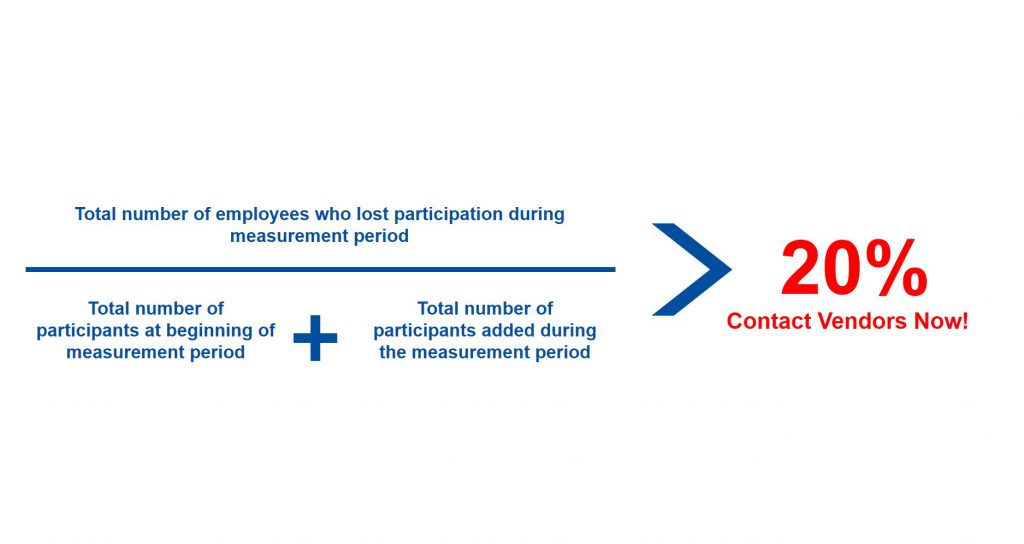
What Triggers a Partial Plan Termination?
The COVID-19 pandemic resulted in many organizations furloughing or even laying off significant portions of their workforce. As a plan sponsor you may be wondering if these kind of changes in any way affect your retirement plan benefit.
The quick answer? It could.
What is a partial plan termination?
A partial plan termination is used to describe a qualified retirement plan that suffers a significant loss of active and eligible employees as the result of some event.
The “event” leading to a partial plan termination could be:
- A one-time experience, such as a facility or office closing
- A longer-term experience, like a recession; or, for example, the coronavirus pandemic
- An irregular experience, such as a notable spike in workforce turnover
Partially terminating a plan requires you to fully vest any employer contributions for those affected workers. Since this is a legal requirement, it helps to act immediately so that you do not terminate someone who then takes a distribution and leaves the unvested money in the plan. If your plan does not have a vesting schedule and everyone is 100% vested already, there is much less concern.
The “magic number” and caveats for partial plan terminations
For partial plan terminations, the magic number to keep in mind is 20%. When 20% or more of the workforce is lost, a partial plan termination takes place.
There are, however, caveats.
Let’s consider workforce turnover. In a given year, your industry’s turnover averages 4%. This is considered normal. One year, however, your organization’s turnover rate jumps to 15%. This irregular occurrence, though less than the “magic number” of 20%, could prompt a partial plan termination because it is a notable increase and historically much higher than the norm.
Now, consider a furlough. You just experienced a significant furlough affecting 20% of your workforce. Did you suffer a partial plan termination? Technically, no, as long as those furloughed workers remain actively employed and eventually come back to work. If the workers leave on their own accord that is their choice. The only way this could potentially impact the plan is by significantly increasing your average turnover.
How to calculate turnover rate
To calculate the turnover rate you must first define the measurement period. A one-time event like a plant closing makes the calculation easier. A longer event, like a recession or the current pandemic, is tougher to quantify as it may span several years.
Next, identify the employees to include in the calculation. The best way to do this to add up the total number of employees who lost participation during the measurement period and divide them by the total participants at the beginning of the period plus the total of new participants added (if any) during the measurement period. Your calculation will look like this:

If your number is greater than 20%, it’s time to contact your retirement plan service providers.
What to do next
Whether you’re dealing with an office closure or a world-wide pandemic, take the time to understand how workforce changes impact your retirement plan benefit. Get started by:
- Recording workforce changes, paying special attention to dates of occurrence; this will help when you need to assess the measurement period
- Calculating your turnover rate and tracking it over time
- Proactively involving plan service provides, ensuring they are aware of your workforce trends and can alert you to any necessary legal or compliance actions
If you would like to discuss your situation or need help determining whether you have or may suffer a partial plan termination, reach out to the team of experts at Francis Investment Counsel. We’ll help you best leverage your existing plan service provider relationships to make sure you’re ready for the next step. Connect with one of our team members directly or fill out the form below for assistance.
Tags: partial plan terminations, furloughs, turnover







